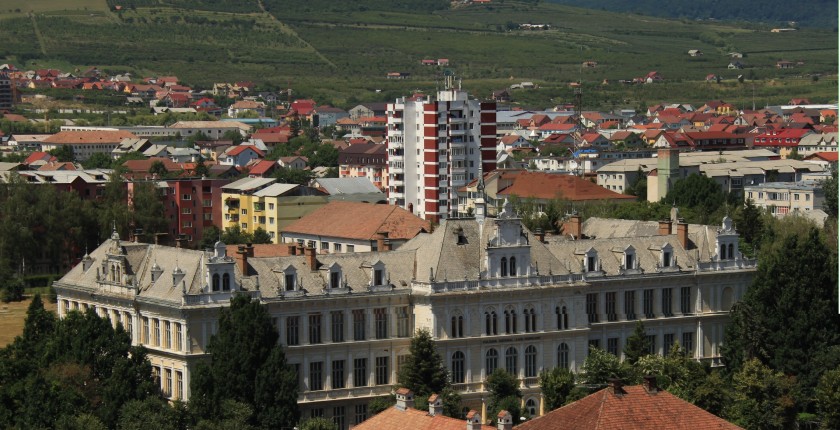
Photo: Cristian Bortes / https://creativecommons.org/licenses/by/2.0/legalcode
The Municipality of Bistriţa decided to apply for European funds for a EUR 2.9 million project to equip educational institutions with renewable energy facilities like heat pumps and photovoltaic panels.
From kindergartens to colleges, 11 educational institutions in Bistriţa in north Transylvania should get their own energy sources, based on a project that the city is about to submit for European funding. The endeavor is valued at EUR 2.9 million and the local authority is applying for a EUR 2.3 million grant through the Large Infrastructure Operational Programme (LIOP or POIM).
The aim is to raise the share of renewables in total primary consumption of electricity and thermal energy, replacing fossil fuels like coal and natural gas, the Municipality of Bistriţa said. It is considering the possibility to install air-to-water heat pumps and solar power panels. The city has 75,000 inhabitants.
The local authority has included the buildings that have been rehabilitated or are under renovation with European or government funds.
Options under consideration are heat pumps and solar power panels
Residents, state and local institutions and firms in Romania can become prosumers and deliver the surplus power from their photovoltaic panels to the grid.
The city in Romania’s north is also improving traffic management and promoting the use of public transport through a project financed through the National Recovery and Resilience Plan (NRRP or PNRR), another funding mechanism from the European Union’s arsenal. The endeavor includes the introduction of smart traffic lights and systems for informing commuters on transportation options.
Seven municipalities in the same county are stuck with outdated biomass projects earmarked for funding under the National Recovery and Resilience plan
On the other hand, seven local authorities in the mountainous Bistriţa-Năsăud County are complaining that they aren’t receiving any bids for the construction of biomass-fueled heating and power plants financed from the LIOP program. Several tenders have failed. Bistriţa is the county capital.
Mayor of Maieru Vasile Borş, the most populous municipality, said the technology envisaged in the project is already outdated and not even manufactured anymore and that changes are necessary. Namely, Maieru finished the feasibility study in 2016. However, the Ministry of European Investments and Projects isn’t picking up the phone, according to Borş.
Romania is generally struggling to meet tight deadlines for European funding.
Of note, another Transylvanian municipality, Sibiu, is launching a project for solar power systems on 11 public buildings including educational institutions, or on adjacent land. The local authority said it is counting on funds from the NRRP. It estimated the annual output at 816 MWh.
Earlier, the Energy Technology High School Elie Radu in Ploiești was renovated under the EU’s nearly zero-energy building standards. Energy consumption was reduced by 60%, and a large part is produced onsite with photovoltaic and solar thermal panels.


















Be the first one to comment on this article.